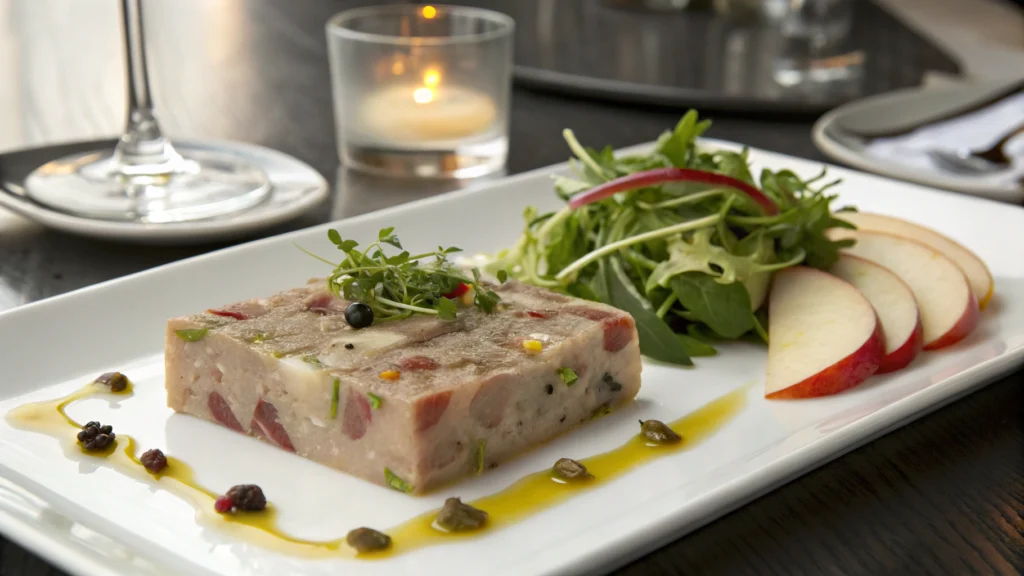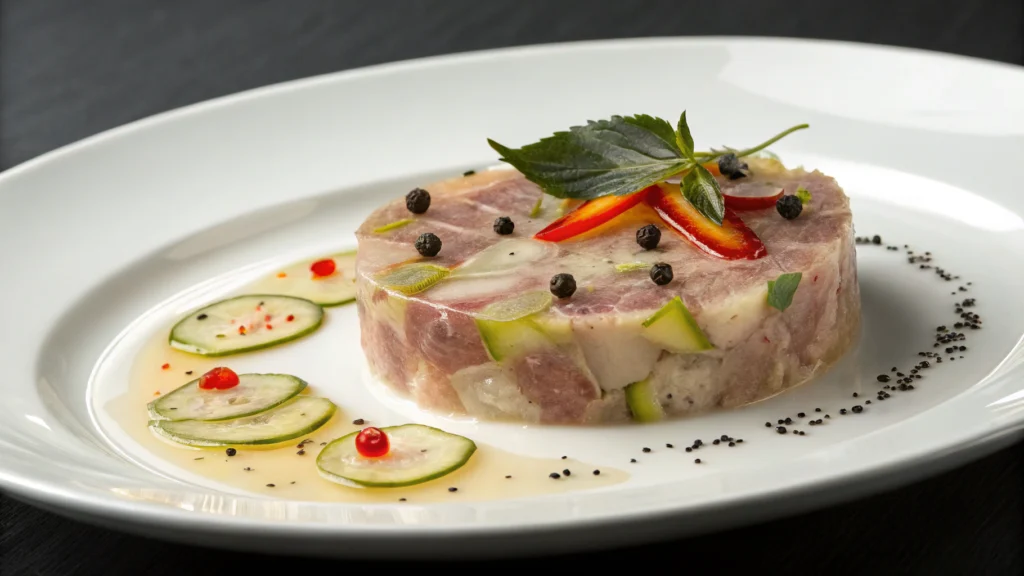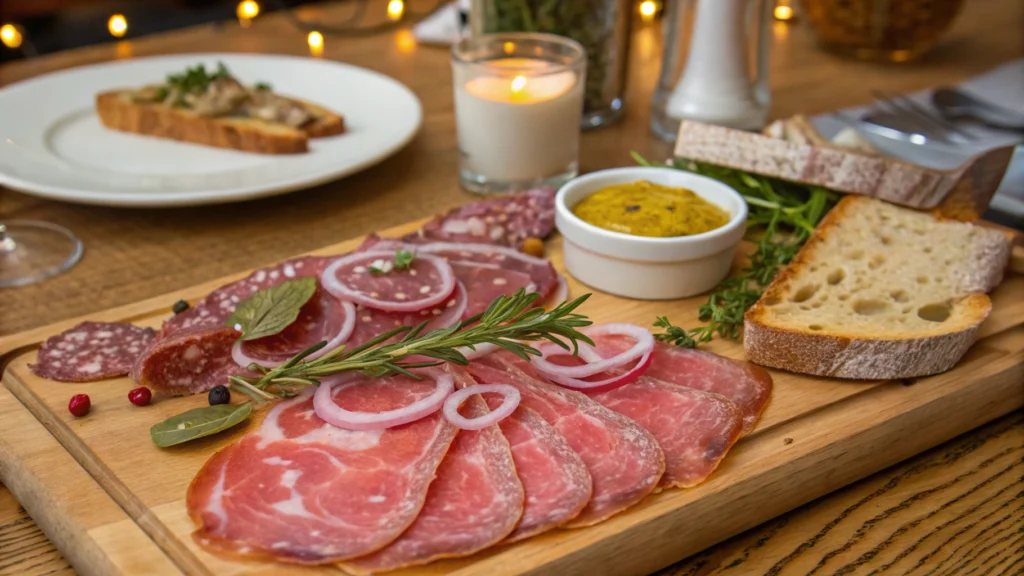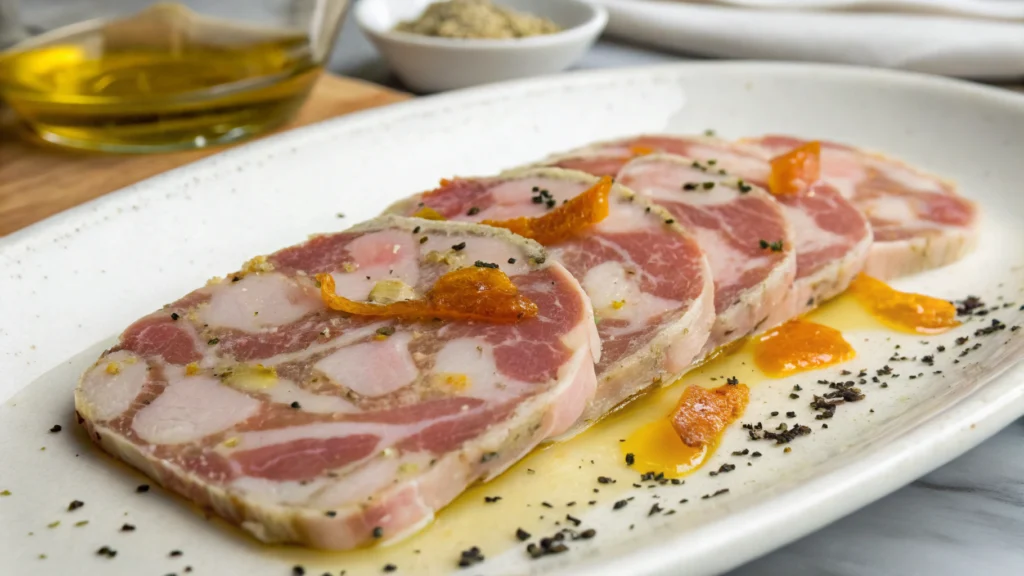
From the Romans: Coppa di Testa Romana
A relic of Roman gastronomic heritage
Coppa di testa, or simply “head cheese,” is one of the oldest Roman delicacies and among the most flavorful meats in Rome. Made from the pig’s least prized parts, it elevates off cuts into gastronomic delight.
Head cheese is the farthest thing from its humble moniker; it represents the Italian saying “del maiale non si butta via niente,” or nothing goes to waste in the pig. Making coppa di testa is a culinary tradition of long-standing, that should inspire cooks to embrace charcuterie and respect utilizing ingredients.
The Fascination with Head Cheese
Head cheese continues to intrigue the adventurous and the gourmet eaters today. With its fatty, gelatinous texture, burst of flavor (seasoned with garlic, orange zest, and dry white wine), the amalgamation of flavors are sophisticated against other cured meats.
This recipe highlights the heartiness of Roman cuisine while providing an opportunity for a modern cook to indulge in an ancient dish. The next time you slice a piece of coppa di testa on a crusty piece of bread or plate it on an antipasti platter, just remember, this is transcendent!
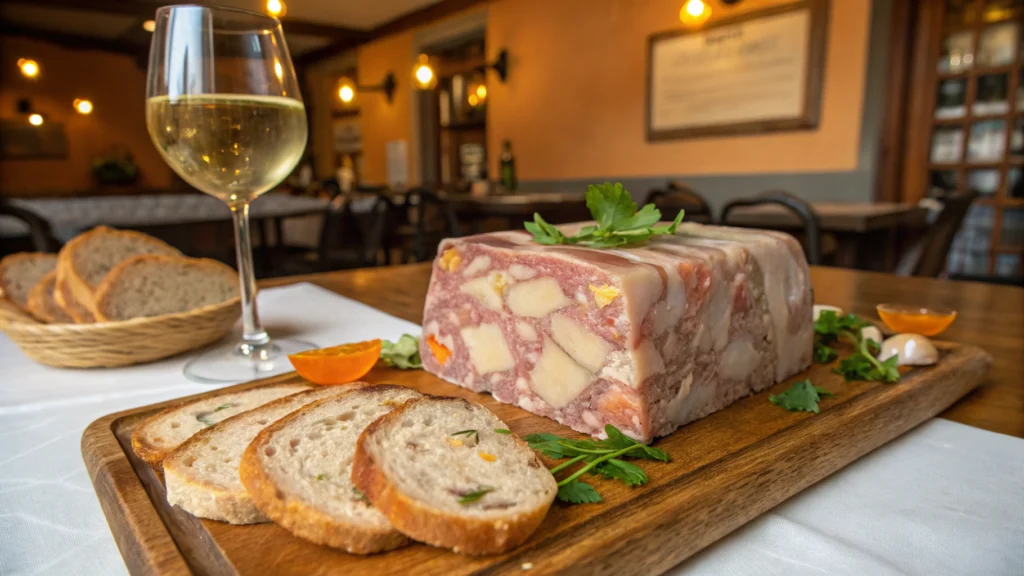
Coppa di Testa Romana
A Rustic Delicacy with Historical Roots
Coppa di Testa Romana, commonly referred to as head cheese, represents the pinnacle of Roman gastronomy. Using the entire animal was inherently Roman, and throwing away the head was simply not an option.
Slow cooked for hours with vegetables and spices, the pig’s head becomes transformed into a very flavorful and delightful terrine-like dish, composed of gelatin and meat. The preparation method involves deboning the meat, mincing the meat, and set it into the gelatin it creates when cooked low and slow.
This cold cut of meat is an unusual experience of creamy fat, flavorful meat, bright citrus notes and rounded warmth of garlic. Coppa di testa in Roma is a regular menu item and can be found in all the traditional Roman trattorias and reminds us of the meals and flavors made by our nonna and the way it used to be.
Flavor Profile and Cultural Significance
The flavor of coppa di testa is both bold and delicate. The garlic gives the dish earthy depth, while the orange zest gives a lift. The white wine revolves itself through the acidity balancing the richness of the pork. In general, coppa di testa is not just a dish; it is a cultural presentation identifiable to the deep seated Roman principle of frugality.
When served with rustic bread or included in a gourmet pizza, coppa di testa is reflective of the cities unique ability to take an ordinary ingredient and elevate it beyond what one can conceptualize. It’s texture and flavor are remarkable.
Servings and Time Considerations
Servings
This recipe yields approximately 10-12 servings of head cheese, which can be shared with friends at a gathering or enjoyed over the course of a few meals. Each serving is around 100 grams, which is a generous serving size for either antipasto platters or sandwiches.
Times
The preparation time required for this recipe is approximately 1 hour and includes cleaning the pig’s head and removing the bones. The cooking time for this recipe to braise is between 3-4 hours, not including the time to chill. This time is essential to ensure that the meat is tender and that the broth is rich in flavor.
The head cheese will need to sit in the refrigerator to set for 24 hours, to ensure it can be sliced cleanly and has a firm texture. This recipe will take a total time of approximately 28 hours (this include chilling time).
Ingredients for Coppa di Testa Romana
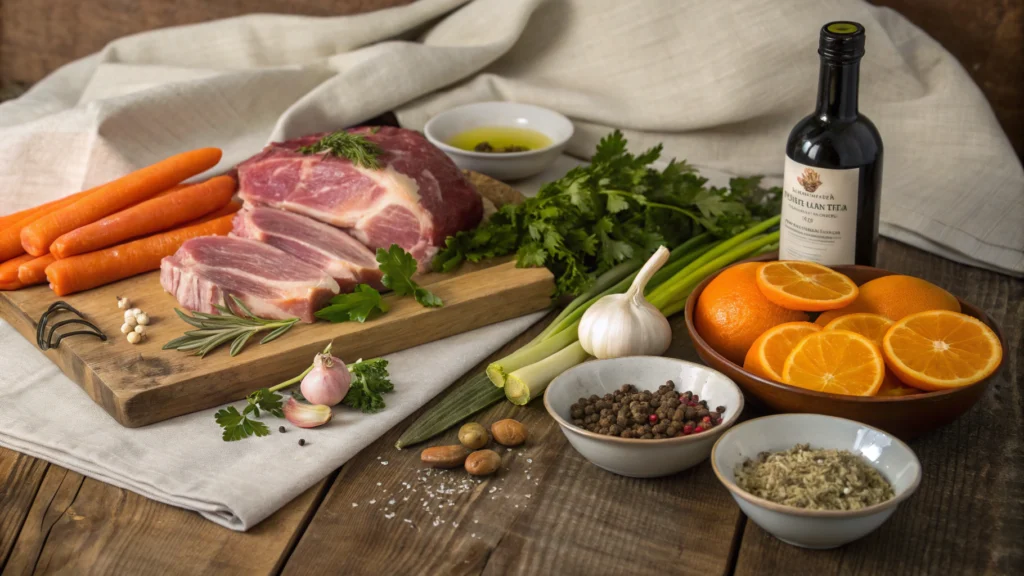
The Required Ingredients
These are the ingredients you will need to make an authentic Roman-style head cheese:
w- pig’s head (approximately 4-5 pounds) cleaned and cut in half
✅- pig’s feet (2; for more gelatin)
✅- large onion (1) cut into quarters
✅- carrot (2) cut into rough pieces
✅- celery stalks (2) cut into rough pieces
✅- garlic cloves (4) minced
✅- oranges – zest of 2
✅- dry white wine – 1 cup
✅- kosher salt- 1 Tablespoon
✅- black peppercorns- 1 teaspoon
✅- coriander seeds – 1 teaspoon
✅- bay leaves – 4
✅- fresh parsley – small bunch
✅- ground nutmeg – 1 teaspoon
Things to add for personalization
If you would like to personalize your head cheese a bit, you could consider adding:-
✅ ground cinnamon -1 teaspoon to warm it up a bit
✅ lemon zest- tablespoon for added brightness
✅ chili flakes -1 teaspoon for a gentle kick
The variations in using the pig’s head allow cooks to personalize the head cheese to their taste while keeping it true to its Roman identity.
Preparation Steps
Cooking the head of pig
First, rinse the pig’s head and feet thoroughly under cold water. If you come across hair, remove it with a razor or torch. Then carefully remove the brain, eyes and tongue (you can reserve the tongue if desired).
Place the head and feet in a stock pot and cover with cold water by 2 inches. Bring to a boil and remove any foam. This ensures we will have a nice clear, clean broth once we cook the head cheese.
Simmer and Season
Once skimming is done, you can add in the onion, carrots, celery, bay leaves, peppercorns, coriander seeds, and parsley. Turn the heat down to a simmer and cook for 3-4 hours until the meat literally falls off the bone. In the last 30 minutes of cooking, add the white wine, garlic, orange zest, salt, and nutmeg.
When you smell everything coming together, you will know the mixture of flavors is coming together in the broth; you won’t be able to resist. You will have the ball of gelatin with the taste of the head cheese in the broth; just wait and see.
Molding the Head Cheese
Cut off the head and feet from the pot. Strain the broth, discarding solids, but reserve the liquid. Pull the meat off the bones and discard the bones and any cartilage. Chop the meat and skin to finely dice or mince.
Add it back to the rest of the meat in the pot, adding back as much of the strained broth as needed to cover and simmer for enough time to combine. Pour this back into a rectangular mold or loaf pan lined with cheesecloth (or towel). Gently compress, cover and then refrigerate for 24 hours. Once set, the head cheese will be firm enough to slice and unmold to serve.
Cooking tips to make a perfect head cheese.
Source quality ingredients.
Your local butcher should be able to sell you a pig’s head and feet fresh. Choosing quality ingredients is paramount, as the flavor of the head cheese will reflect the quality of the fresh pork. The taste of fresh organic or pasture-raised pig will taste noticeably better than a regular pig. The white wine should be dry and crisp when purchasing. A dry crisp Pinot Grigio is the desirable choice with the richness of the dish.
Get the texture right.
The texture of head cheese is gelatinous, based on how much collagen is in the broth. Be sure that there is enough pig’s feet to obtain natural gelatin; however, do not overcook your broth or you will lose clarity. Always be prepared for any occasion if your ingredients do not set sufficiently to a firm product. Simply simmer additional feet to increase the gelatin to set the head cheese properly when molding.
Methods of Enhancing Flavor
Enhance the aroma of the coriander seeds by toasting them before adding them in. Use the zest of a fresh orange for maximum citrus aroma. For an added layer of flavor reduce the broth slightly before adding it to the flesh. Be sure to taste the broth before molding so that you can adjust some of the salt and spices; it’s important to have a well-balanced head cheese!
Nutritional Information
Caloric Composition
A 100 gram serving of coppa di testa yields about 250 calories, primarily from the fat and protein of the pork. Head cheese is high in caloric density, and is a rich and filling accompaniment to meals.
Macronutrient Breakdown
Total Fat: 18g (28% DV), comprised of 6g saturated fat (30% DV)
Cholesterol: 80mg (27% DV)
Sodium: 600mg (25% DV)
Total Carbohydrate: 2g (1% DV), 0g dietary fiber and 0g sugars
Protein: 20g (40% DV)
For a 2,000 calorie diet, these values demonstrate that head cheese is calorie-dense while being nutrient-dense, so if you’re on a protein-heavy diet, head cheese is a great choice.
Serving Suggestions and Pairings
Traditional Roman Accompaniments
Coppa di testa may be served sliced thinly on crusty ciabatta or focaccia drizzled with extra virgin olive oil. Serve with pickled vegetables or olives for a classic antipasto. Chianti or white wine like Bellone also complements the citrus and garlic flavor of the head cheese while hearkening back to Roman tradition.
Modern Takes for Serving Head Cheese
Take it up a notch by featuring it in a fun or gourmet sandwich, with arugula and mustard. Another idea is to cube, and toss it with roasted vegetables to make a rustic salad. Try to serve head cheese in a different way and allow it to be the star, and serve it on top of a white pizza with mozzarella cheese and fresh herbs.
related
